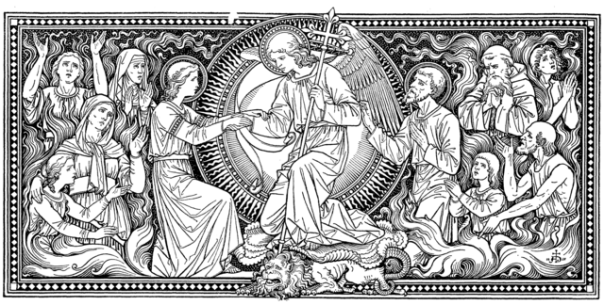Saint Augustine's Church, Snave, Ashford, Kent.
A Latin Missa Cantata will be Celebrated here on Saturday, 28 September 2019, 1200 hrs.
Travel Directions are given, below.
It is possible that a small private Chapel stood on this site before the present building was commenced in the Late-13th-Century. The East End is unusual in that The Lady Chapel
(more recently used as a School Room) vies for importance with The Chancel.
Declared redundant in 1983, Saint Augustine's Church is now entirely maintained by
The Romney Marsh Historic Churches Trust.
Text: © 2014 Joan Campbell.
Photograph: © 2014 John Hendy.
Missa Cantata at Saint Augustine's, Snave (near Ashford, Kent), September 2015.
The first time in 477 years that a Latin Sung Mass (Missa Cantata) had been Celebrated
in this beautiful Mediæval Church on Romney Marsh, Kent, England.
On Saturday, 28 September 2019, 1200 hrs, there will be Celebrated
another Missa Cantata in this lovely Church.
The Latin Mass Society returns to Snave
for a Missa Cantata, at 12 Noon,
Saturday, 28 September 2019.
The Celebrant is Fr. Marcus Holden.
Music will be supplied by The Victoria Consort.
For those unfamiliar with the
superb quality of their singing, a CD,
is available to purchase from
The Latin Mass Society
Saint Augustine's Church is one of
the Mediæval Churches now in the care of
Light refreshments will be served after Mass.
Missa Cantata.
Saint Augustine's Church,
Snave, Ashford, Kent TN26 2QJ.
Saturday, 28 September 2019,
1200 hrs.
Celebrant: Fr. Marcus Holden.
Music: The Victoria Consort.
Director: Ben Bevan.
Further Details: Mrs. Marygold Turner.
Telephone: 01580 291372.
Travel Directions to Saint Augustine's Church,
Snave (near Ashford), Kent TN26 2QJ.
By Road.
Leave the M20 at Junction 10.
Follow the A2070 towards Hastings.
After, approx, 9.3 miles, take the Slip Road
to the LEFT (signposted "SNAVE").
At the Post-Box (on your LEFT),
TURN LEFT,
and you have arrived at the Church.
(N.B. Google Maps mark the destination
as "Manor Farm")
By Rail.
Frequent Trains from
Saint Pancras International Railway Station, London, going to
ASHFORD INTERNATIONAL.
Then take a Taxi to SNAVE.
Permission for this Mass at Saint Augustine's Church, Snave, Ashford, Kent,
has been kindly given by
Missa Cantata,
in Saint Augustine's Church,
Snave (near Ashford), Kent TN26 2QJ.
Saturday, 28 September 2019,
1200 hrs.
Snave is one of a group of Mediæval Churches built to serve very small communities on Romney Marsh, in Kent. Now redundant, they are in the care of The
Romney Marsh Historic Churches Trust, who have kindly given permission for us to Celebrate Mass on Saturday, 28 September 2019, at 12 noon.
2018 was the fourth time that a Latin Mass had been Celebrated in this beautiful Church since Reformation times. We are delighted to be able to return this year.
Missa Cantata.
Saint Augustine's Church,
Snave, Ashford, Kent TN26 2QJ.
Saturday, 28 September 2019, 1200 hrs.
Celebrant: Fr. Marcus Holden.
Schola: The Victoria Consort.
Director: Ben Bevan.
Further Details:
Mrs. Marygold Turner 01580 291372.
Permission for this Mass at Saint Augustine's Church,
Snave, Ashford, Kent, has been kindly given by






























